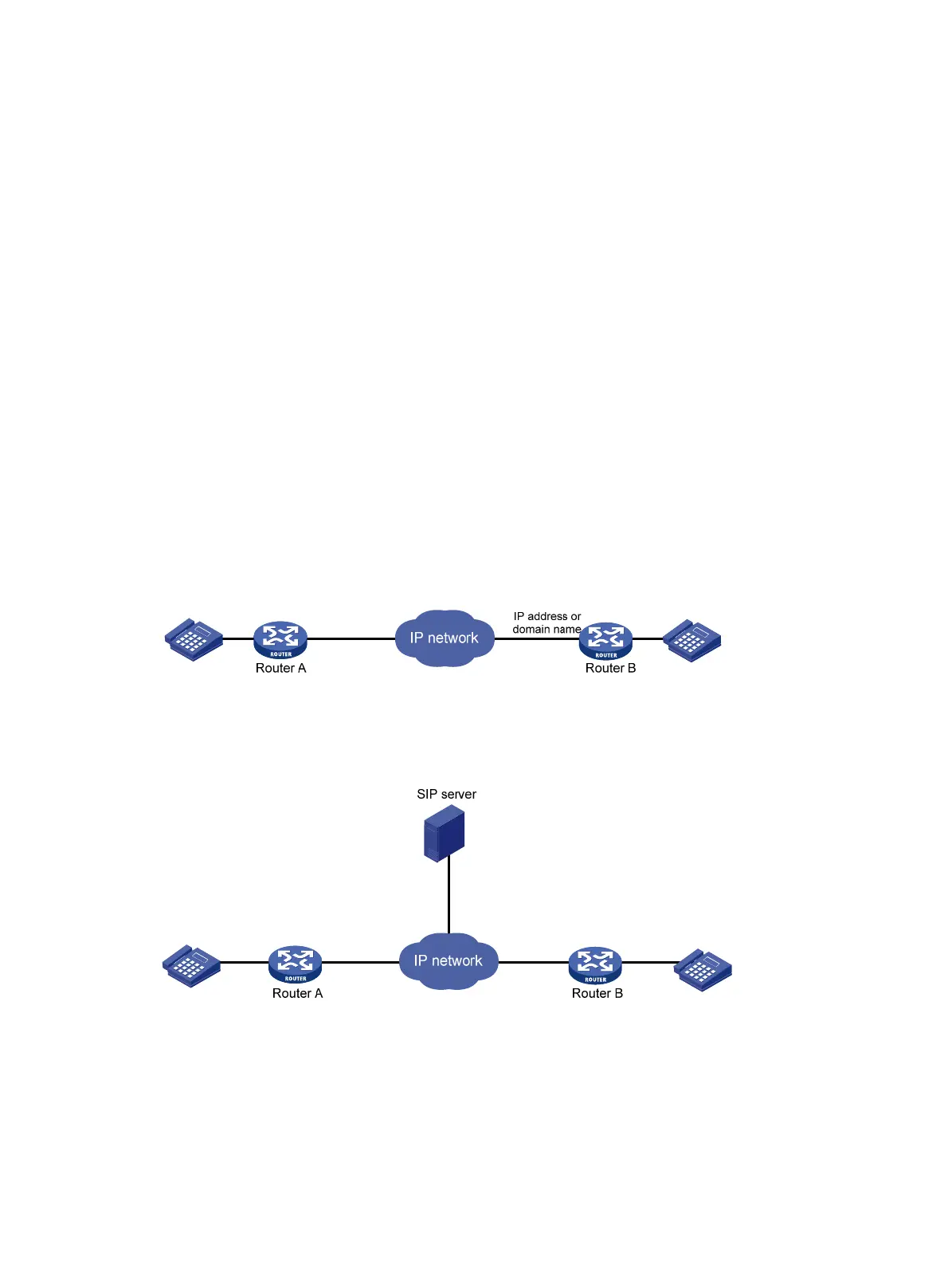168
Basic settings
This section provides information about configuring basic settings.
Introduction to basic settings
Local number
Local number configuration includes setting a local telephone number and authentication information
used for registration.
Call route
Call route configuration includes setting a destination telephone number and call route type. The call
route type can be either SIP routing or trunk routing.
SIP routing
SIP routing includes proxy server mode, IP routing mode, and binding server group mode. If you
select IP routing, the called parties can be found through static IP addresses or domain
names. Figure 558 sh
ows
the network diagram for IP routing mode.
Figure 558 Network diagram for IP routing mode
Figure 559 shows the network diagram for proxy server and binding server group modes, which
require the involvement of a SIP server.
Figure 559 Network diagram for proxy server and binding server group modes
Trunk routing
You can connect devices to the PBX on the PSTN network through FXO, E&M, VE1, VT1, and BSV
trunk lines. Among them, VE1 and VT1 trunk routing enables the device to provide more voice
communication channels. Therefore, it greatly increases device usage and broadens the service
range.

